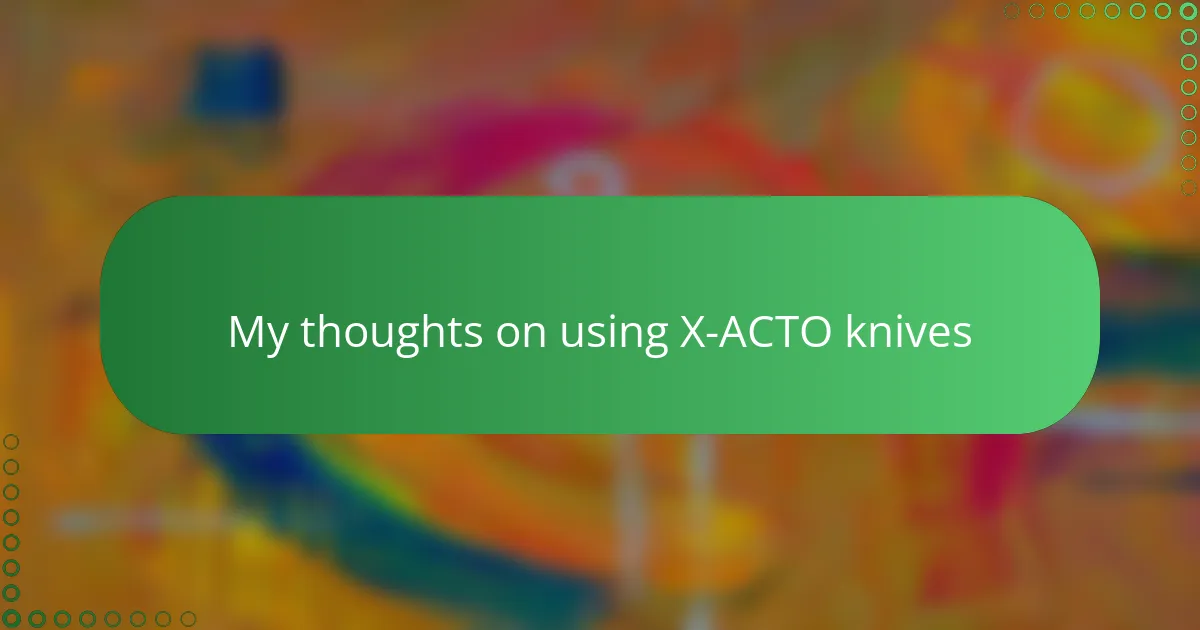Key takeaways
- X-Acto knives provide superior precision and control for cutting delicate materials, making them ideal for paper crafts.
- The ergonomic design and lightweight build of X-Acto knives enhance comfort during extended use, leading to cleaner cuts.
- Selecting the appropriate blade type, like the classic #11 for intricate work, can significantly improve the quality of your projects.
- Regular maintenance, such as keeping blades sharp and replacing them when dull, is crucial for achieving consistent, professional results.
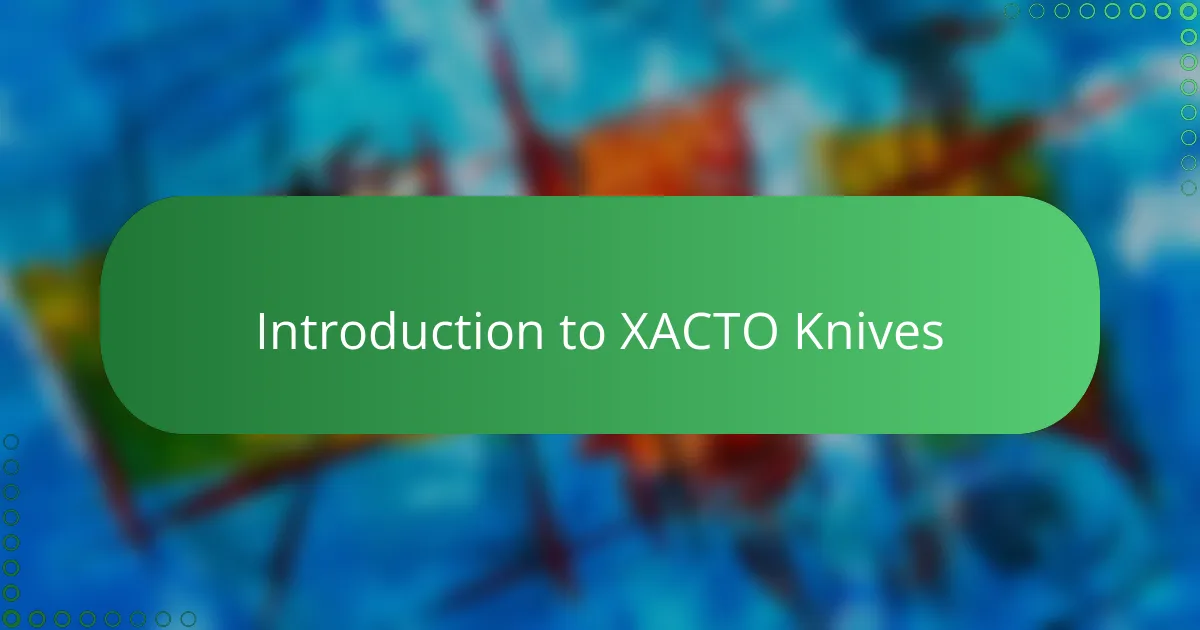
Introduction to XACTO Knives
X-Acto knives have long been a staple in my craft toolbox, especially when precision is key. They are designed with sharp, replaceable blades that make cutting through paper, thin cardboard, and other delicate materials surprisingly easy.
Have you ever struggled to get a clean cut on your handmade paper projects? That’s exactly where an X-Acto knife comes in—it offers control and finesse that scissors simply can’t match. Once you get a feel for the balance and grip, it almost feels like the blade becomes an extension of your hand.
From my experience, the versatility of these knives really stands out. Whether I’m trimming intricate shapes or scoring fold lines, an X-Acto knife gives me confidence in my craftsmanship. It’s a tool that demands respect but rewards you with beautiful results every time.
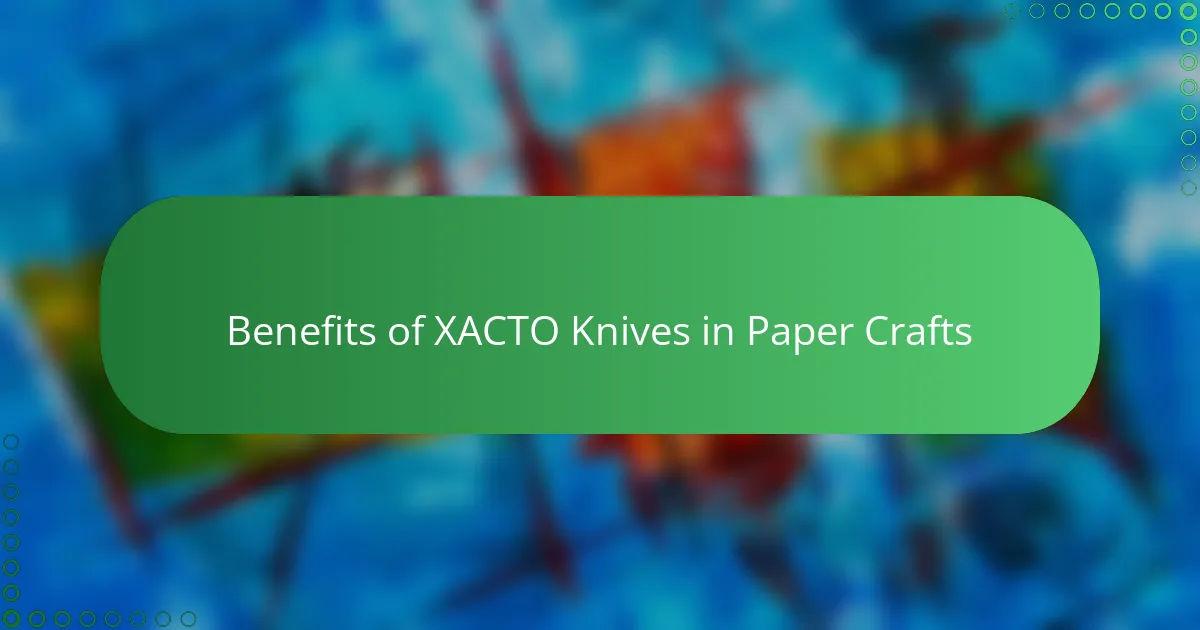
Benefits of XACTO Knives in Paper Crafts
One of the biggest benefits I’ve noticed with X-Acto knives is the incredible precision they offer. When I’m cutting delicate designs or tiny details on handmade paper, nothing beats the control this tool provides. Have you ever felt frustrated by jagged edges or uneven cuts? With an X-Acto, those worries fade away because the blade moves exactly where you want it to.
Another thing I appreciate is how comfortable these knives feel during extended crafting sessions. The lightweight design and ergonomic grip mean my hand doesn’t tire quickly, which keeps my focus sharp. From my experience, this comfort translates directly into cleaner cuts and less frustration—both huge wins in any detailed project.
Lastly, I can’t overlook the versatility. Not only does the X-Acto knife handle intricate shapes, but it’s also perfect for scoring fold lines without tearing the paper. This dual function has saved me time and added a professional touch to many of my handmade creations. Isn’t it satisfying when one tool can do so much?

Choosing the Right XACTO Knife for Projects
Choosing the right X-Acto knife really depends on the type of projects you’re tackling. For detailed, delicate cuts on thin handmade paper, I usually reach for the classic #11 blade—it’s sharp and pointed, perfect for precision work. Have you ever tried a blade that felt too bulky or dull? It can ruin your entire project, which is why selecting the right blade shape makes all the difference.
In some projects, I’ve found a knife with an ergonomic handle to be a game-changer, especially during long crafting sessions. When your hand feels supported and comfortable, your control naturally improves, and so does the quality of your cuts. Don’t underestimate how much a well-balanced knife affects your patience and focus.
Sometimes, I switch to specialty blades like the chisel or curved ones for particular effects or thicker materials. It might seem like extra effort to have multiple blades, but trust me, having the right tool for each task not only saves time but also enhances the finish of your paper crafts. Have you noticed how a small change in blade shape can completely transform your approach to a cut? It’s a subtle detail that really elevates your work.
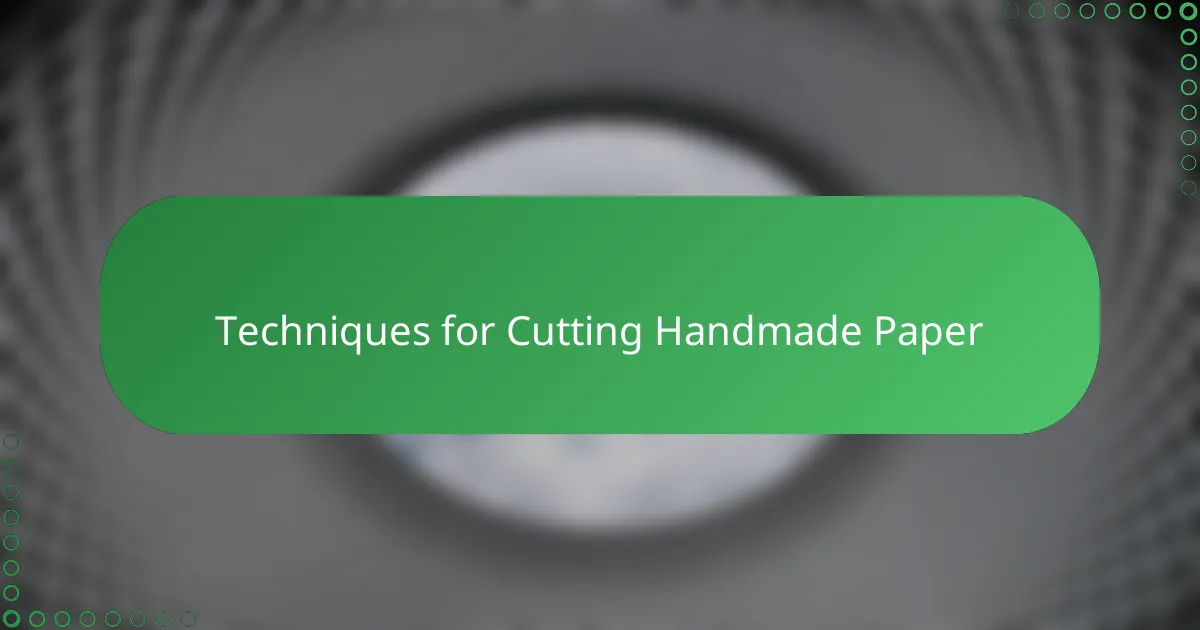
Techniques for Cutting Handmade Paper
When cutting handmade paper, one technique I rely on is using a steady, gentle pressure rather than force. Have you ever pushed too hard with a blade and ended up tearing the paper? I definitely have, and that taught me the importance of letting the sharpness of the X-Acto knife do the work instead of my strength. It’s about patience and a light touch.
Another trick I picked up is to score the paper first if it’s thicker or has texture. This means making a shallow initial cut to guide the blade smoothly through the fibers. I find this approach reduces tearing and results in a cleaner edge—something crucial when the handmade paper has an uneven surface or thickness.
Lastly, changing blades frequently is key to technique. A dull blade isn’t just frustrating; it damages delicate paper fibers and ruins intricate designs. From my experience, having a fresh, sharp blade feels like starting with a new level of control and confidence each time I pick up my knife. Have you noticed how much easier cutting is with a blade that slices effortlessly? It’s a subtle difference that transforms the entire crafting process.
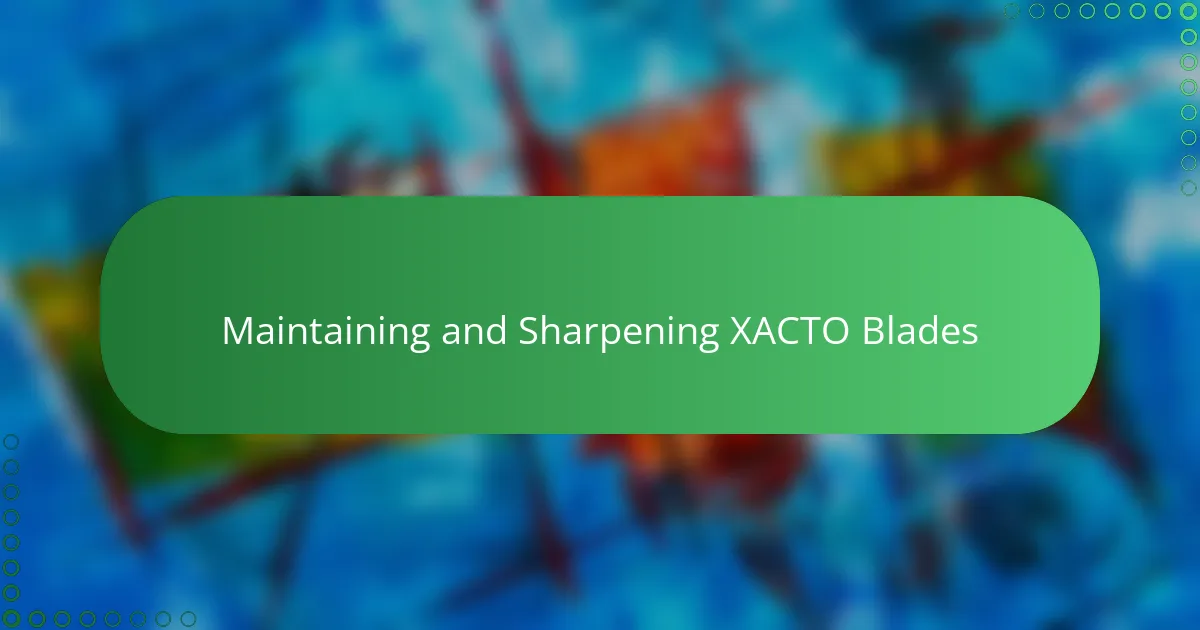
Maintaining and Sharpening XACTO Blades
Keeping X-Acto blades sharp is essential in my experience. I always store my knives with their caps on and avoid cutting on hard surfaces to prevent dulling. Have you ever tried cutting with a blade that feels blunt? It’s frustrating and can wreck the delicate edges of handmade paper instantly.
When it comes to sharpening, I’ve found using a fine honing stone or even a strop can bring a blade back to life without replacing it immediately. It’s a quick fix that saved me a few times when I was mid-project and didn’t have spares on hand. Have you ever given sharpening a try, or do you usually swap blades right away?
That said, replacing blades regularly is still the best way to maintain precision. There’s nothing quite like that fresh, razor-sharp edge gliding effortlessly through paper. It’s almost meditative, and you can actually feel your cutting improve when the blade is in top condition. Don’t we all want those perfect, clean cuts every time?

My Personal Experiences with XACTO Knives
I remember the first time I used an X-Acto knife on handmade paper—it felt a bit intimidating at first. The sharp blade demanded respect, and I was nervous about slipping or tearing my delicate sheets. But once I got comfortable, there was this satisfying moment when every cut landed exactly where I wanted, almost like the knife was reading my mind.
There have definitely been moments where I pushed too hard, trying to force a cut, only to regret it with a ragged edge or an accidental tear. That taught me to trust the blade’s sharpness more and my own patience less. It’s amazing how much difference a light, confident hand makes—have you ever felt that sense of control that turns frustration into creativity?
Over time, I’ve come to appreciate how the X-Acto knife becomes kind of a companion in my crafting sessions. Its balance, grip, and precision feel like an extension of my fingers, especially during long projects. I often find myself getting lost in the rhythm of cutting, like it’s a quiet meditation—and the beautiful, precise edges on my paper are the proof that patience and the right tool go hand in hand.
